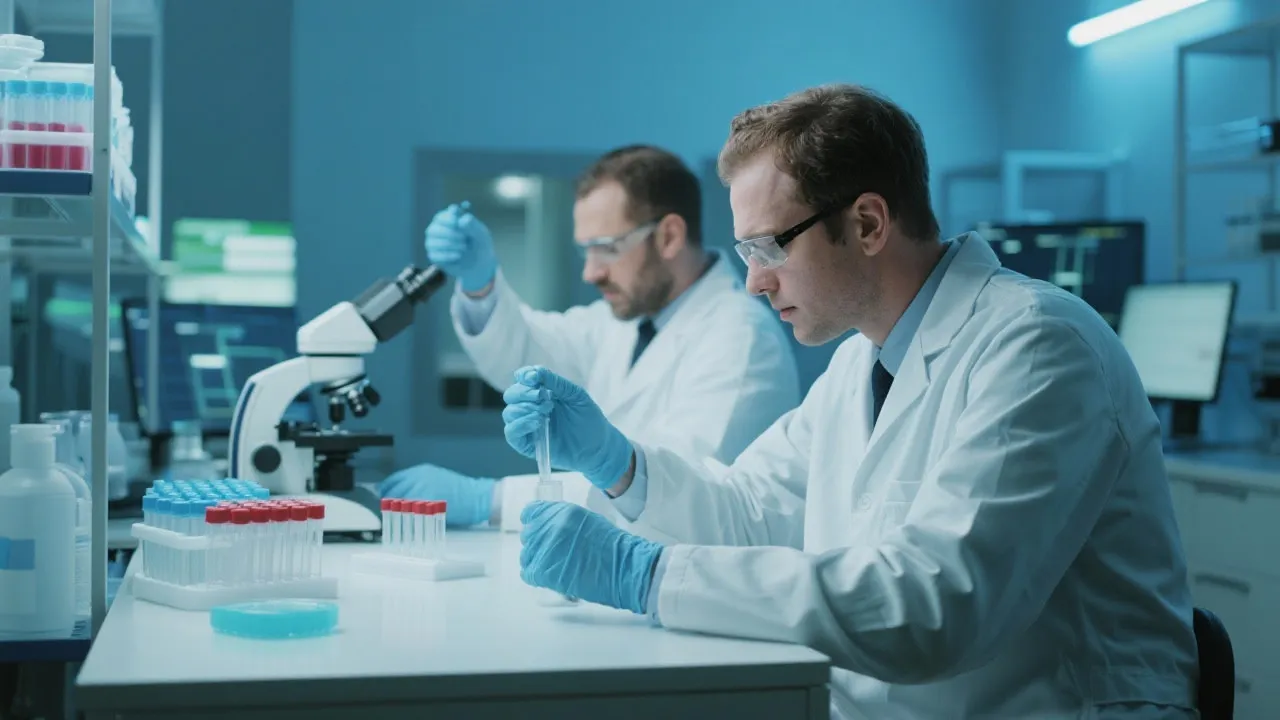Understanding the Cyp1a1 Assay
This article examines the Cyp1a1 Assay, a crucial tool in pharmacological and toxicological research, which evaluates enzyme activity related to drug metabolism and environmental toxicology. By understanding its applications and methodologies, researchers can better assess the risks and benefits associated with various substances.

Introduction to the Cyp1a1 Assay
The Cyp1a1 Assay is an essential analytical technique in the field of pharmacology and toxicology. It is predominantly used to study the enzyme cytochrome P450 1A1, which plays a pivotal role in the metabolism of xenobiotics—chemical substances foreign to the biological system. This enzyme is critically involved in drug metabolism as well as the detoxification of environmental pollutants. The study of Cyp1a1 is particularly significant due to its involvement in the bioactivation of procarcinogens, especially polycyclic aromatic hydrocarbons (PAHs), which pose a significant risk to human health and the environment. Researching Cyp1a1 activity can provide insights into how different organisms metabolize various compounds and can also help predict the potential ecological impact of pollutants.
Significance in Research
The importance of the Cyp1a1 Assay cannot be overstated in understanding the metabolic pathways of various substances. Its applications extend from evaluating the safety and efficacy of pharmaceuticals to assessing the potential harm of environmental chemicals. This assay provides insight into the rate at which a substance is metabolized, offering valuable data for researchers and clinicians. Additionally, the ability to discern how different factors like genetic variations, environmental factors, and existing metabolic pathways influence enzyme activity is crucial. For instance, polymorphisms in the gene encoding Cyp1a1 can lead to significant inter-individual variability in drug metabolism and toxin clearance.
Methodology and Execution
Conducting a Cyp1a1 Assay involves sophisticated techniques and equipment. Typically, it requires the extraction of liver microsomes or cells expressing the Cyp1a1 gene. Samples may be obtained from various sources, including human liver, animal models, or recombinant systems. Following extraction, the enzymatic activity is gauged through the conversion of a specific substrate into a metabolite. Commonly used substrates for Cyp1a1 assays include 7-ethoxyresorufin and 3,3',4,4'-tetrachlorobiphenyl, among others. This conversion is measured using chromatographic or spectrophotometric methods, which provide quantifiable data on enzyme kinetics. Advanced methodologies, such as high-performance liquid chromatography (HPLC) or liquid chromatography-mass spectrometry (LC-MS), are frequently employed to achieve high sensitivity and specificity in quantifying metabolites produced during the assay.
Benefits of Using the Cyp1a1 Assay
- Accuracy: Offers precise measurements of enzyme activity, allowing for reliable assessments of metabolic rates and potential interactions.
- Versatility: Applicable to a wide range of substances, from pharmaceuticals to environmental toxins, making it a useful tool across various research domains.
- Predictive Value: Essential for predicting drug-drug interactions, which can improve patient safety by anticipating adverse effects before they occur.
- Understanding Genetic Variability: Allows researchers to study how genetic polymorphisms affect enzyme activity, furthering personalized medicine approaches.
Industry Applications
In the pharmaceutical industry, the Cyp1a1 Assay is crucial for drug development processes. Companies use this assay to predict how a new drug will interact with existing medications, thereby ensuring its safety and efficacy. This predictive capability is vital for the preclinical evaluation of drug candidates, allowing researchers to prioritize compounds that demonstrate optimal metabolic profiles. Environmental scientists also rely on the assay to understand the impact of pollutants, contributing to better environmental protection policies. The assay informs risk assessments by evaluating how pollutants are metabolized in various organisms, elucidating their toxicity levels and environmental persistence.
The applications of Cyp1a1 extend into clinical settings, where it can help in understanding individual responses to drug therapies. For patients with genetic predispositions that affect Cyp1a1 activity, this assay can guide dosing regimens and choices of therapeutics, minimizing the risk of adverse drug reactions. Moreover, recent studies exploring the role of Cyp1a1 in disease pathology, such as cancer and cardiovascular diseases, are paving the way for novel therapeutic strategies that target enzyme activity for improved patient outcomes.
Comparison Table: Cyp1a1 Assay Applications
| Application | Description |
|---|---|
| Pharmaceutical Testing | Assessing drug metabolism and interactions, aiding in the identification of safe therapeutic regimens. |
| Environmental Safety | Evaluating the detoxification of pollutants, important for ecological risk assessments and regulatory compliance. |
| Personalized Medicine | Understanding variability in drug responses due to genetic differences affecting Cyp1a1 activity. |
| Disease Research | Studying the role of Cyp1a1 in disease mechanisms, particularly in cancer and metabolic disorders. |
FAQs
- What is the primary function of Cyp1a1?
The enzyme primarily metabolizes xenobiotics and participates in the detoxification of harmful compounds. It plays a crucial role in the metabolic activation of various therapeutic agents and environmental toxins, influencing their bioavailability and toxicology. - Why is the Cyp1a1 Assay critical in drug development?
It helps predict potential adverse reactions and interactions, enhancing drug safety profiles. By providing information on metabolism and bioactivation pathways, the assay circumvents late-stage drug development failures linked to unexpected toxicities. - How does genetic variability impact Cyp1a1 activity?
Genetic polymorphisms can result in varying enzyme activity levels among individuals, which affects how quickly or efficiently drugs are metabolized. This variability necessitates individualized approaches to treatment and drug development, ensuring efficacy and safety across diverse populations. - What advancements are being made in Cyp1a1 assays?
Research is focused on developing high-throughput screening methods and more sophisticated in vitro models such as microphysiological systems. These advancements aim to mimic in vivo conditions more closely and provide better predictive power in terms of human responses to drugs and toxins.
Challenges and Future Directions
Despite its numerous advantages, the Cyp1a1 Assay faces challenges such as substrate specificity and the need for high-cost equipment. Some substrates may not adequately reflect the enzyme’s activity across different sources or conditions, leading to questions about the translatability of results from in vitro to in vivo scenarios. Additionally, the dependency on expensive chromatographic equipment can limit accessibility in some laboratories.
Future research is directed towards developing more cost-effective, rapid, and universally applicable assays. This includes evaluating new substrates that provide more reliable and meaningful enzyme kinetics data. The evolution of these assays will significantly advance our understanding of enzyme behavior in different biological contexts. Moreover, integrating advances in bioinformatics and computational modeling can enhance the predictive capabilities of Cyp1a1 assays, providing insights into the interaction networks and pathways involved in drug metabolism.
As scientific inquiry progresses, the Cyp1a1 Assay remains a cornerstone of research, particularly in the fields of drug safety and environmental protection. The quest for understanding how xenobiotics interact with biological systems through enzymatic pathways is crucial for developing safer drugs and mitigating the adverse effects of environmental pollutants. Ongoing studies continue to unveil the complexities of Cyp1a1, further affirming its importance in toxicology, pharmacogenetics, and environmental health.





